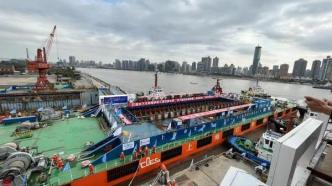
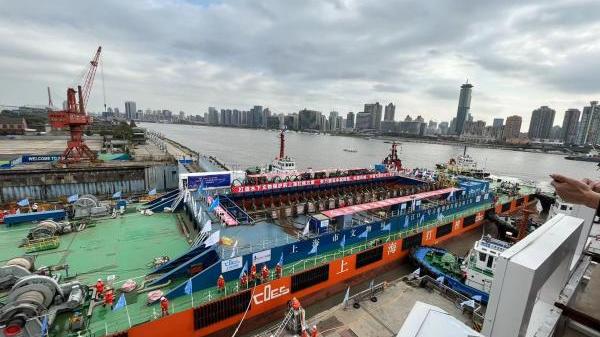
The ancient ship No. 2 of the Yangtze Estuary successfully docked!
Four days after the successful overall salvage of the Yangtze River Estuary No. Embracing the ancient ship, it slowly sailed along the Huangpu River into the No. 1 dock at the former site of the Shanghai Shipyard on the Yangpu Riverside. This trading ship that had sunk underwater for more than 150 years during the Tongzhi period of the Qing Dynasty finally "settle down" on the banks of the Huangpu River.
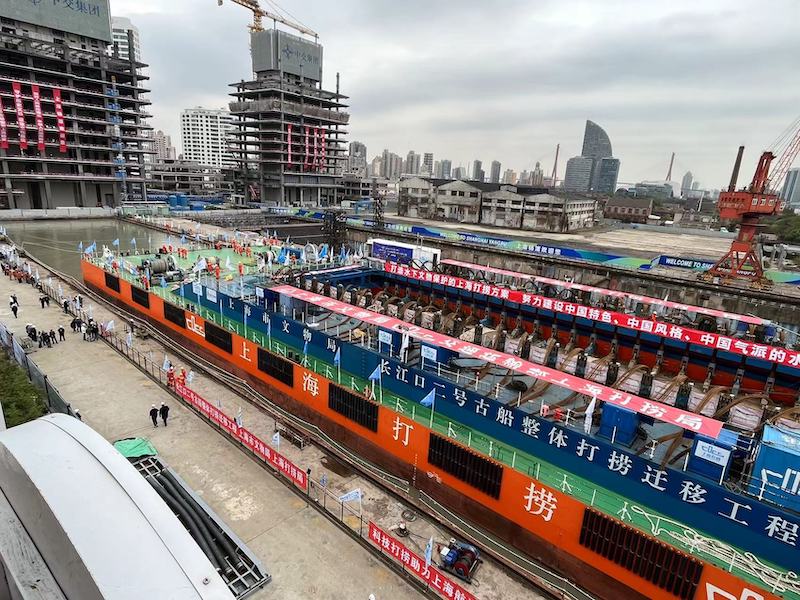
"Yangtze River Estuary No. 2" Ancient Ship Docking Site

"Yangtze River Estuary No. 2" Ancient Ship Docking Site
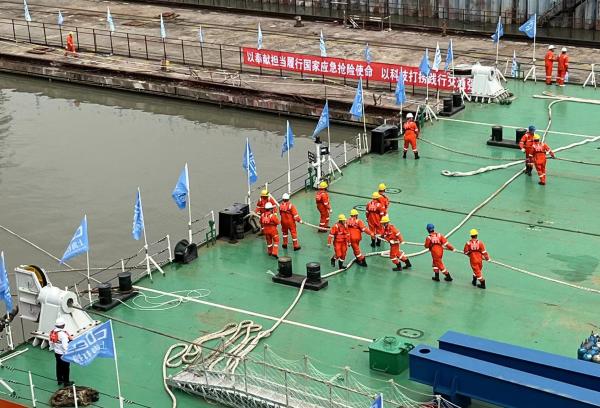
"Yangtze River Estuary No. 2" Ancient Ship Docking Site
After the ancient ship "Yangtze River Estuary No. 2" was salvaged in the early morning of November 21, how the ancient ship will be moved into its "new home" has always been the focus of attention.
At 1:30 p.m. today (November 25), the dedicated salvage engineering vessel "Fenli Lun" designed and built for the overall salvage and transportation of the No. The ancient ship's curved beam caissons were placed precisely on pre-cast saddles.
The smooth docking of the Yangtze River Kou No. 2 ancient ship also marks the successful completion of the overall salvage task of the Yangtze River Kou No. 2 ancient ship archeology and cultural relics protection.
The State Administration of Cultural Heritage joined hands with the Shanghai Municipal Party Committee and Municipal Government in high-level design, active planning, and coordination of various forces to coordinate the overall salvage of ancient ships, archaeological excavations, protection of hulls and ship-borne cultural relics, and museum construction. On March 2, 2022, the overall salvage phase of the archaeological and cultural relics protection of the Yangtze Estuary No. 2 ancient ship was officially launched. At 0:40 am on November 21, the No. 2 ancient ship at the mouth of the Yangtze River was successfully salvaged as a whole. Today, after the ancient ship is docked and the overall salvage work is completed, it will enter a new stage of archaeological excavation, overall protection of cultural relics and museum construction planning.
The Yangtze River Estuary No. 2 ancient ship is located on the channel of the Yangtze River Estuary. It is a relic of the ancient Maritime Silk Road trade. It was discovered in 2015 during the key survey of underwater archeology in Shanghai. Due to the long-term erosion of the water, the hull of the ship gradually exposed to the bottom of the sea, making it difficult to protect the original site. The turbid waters of the Yangtze River Estuary also made it impossible to conduct a comprehensive and systematic underwater archaeological excavation. The archeology and protection of the No. 2 ancient ship has been included in the national "14th Five-Year Plan for Cultural Relics Protection and Scientific and Technological Innovation Plan".
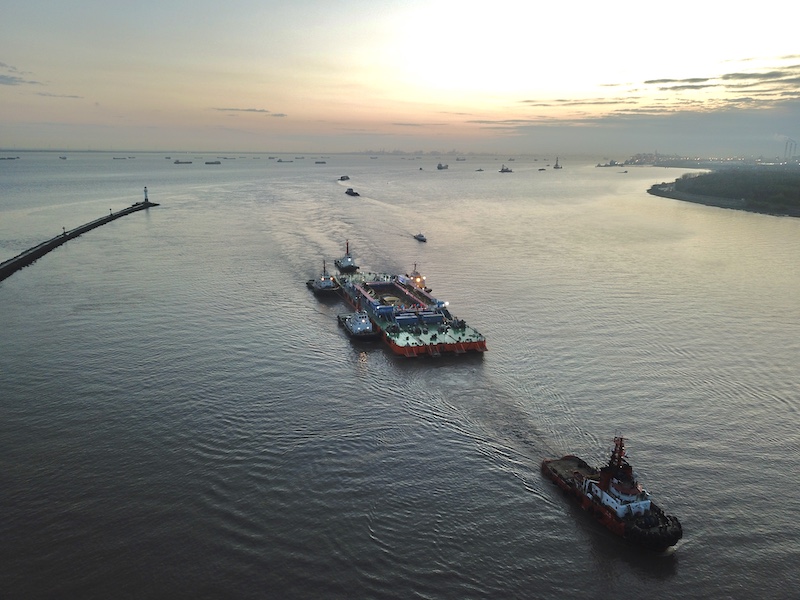
The ancient ship "Yangtze River Estuary No. 2" is on its way to Yangpu Riverside
Innovative practice of underwater archeology in China
General Secretary Xi Jinping emphasized that we must attach great importance to archaeological work, strive to build archaeology with Chinese characteristics, Chinese style, and Chinese style, better understand the long-standing and profound Chinese civilization, and provide strong support for promoting China's excellent traditional culture and enhancing cultural self-confidence.

salvage scene
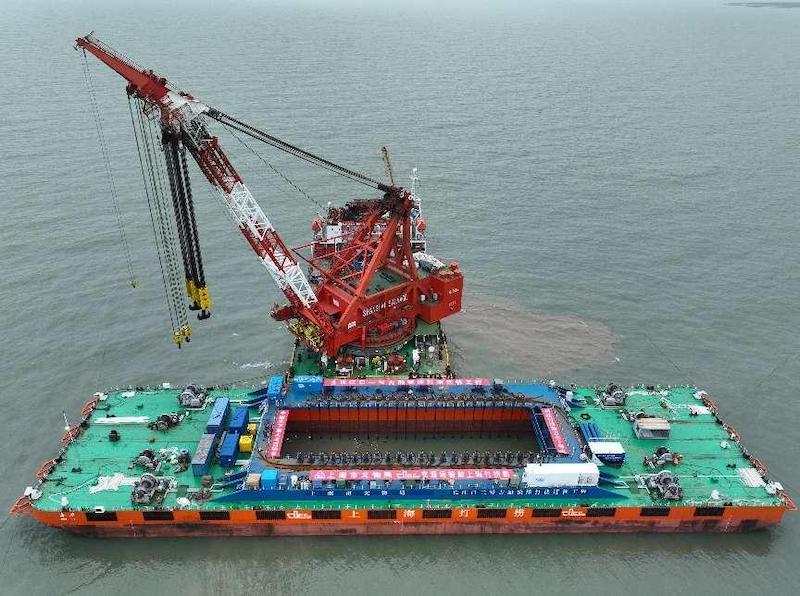
Hercules and the Wheel of Endeavor
The smooth advancement of the archaeological and cultural relics protection project of the No. 2 ancient ship in the Yangtze River Estuary is an innovative practice in the development of China's underwater archaeology for more than 30 years, fully embodies the great social and political significance of archaeological work, and fully embodies the fact that archaeological work discusses history with objects , The historical significance of Shi Zengxin fully embodies the practical role of archaeological work in inheriting and promoting Chinese civilization and telling Chinese stories well.
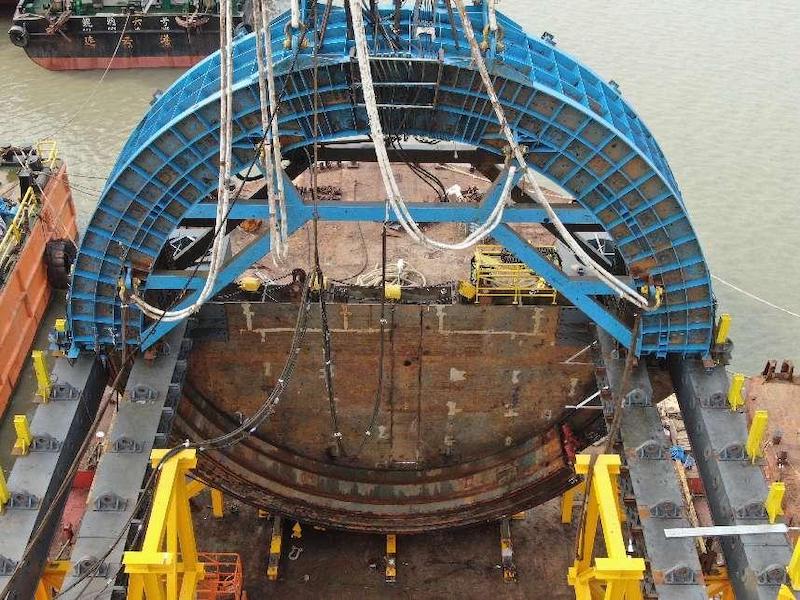
Arc beam piercing beam site
The discovery of the No. 2 ancient ship at the mouth of the Yangtze River filled the gap in the study of wooden sailboats in the late Qing Dynasty in my country. It is a valuable testimony of Shanghai as a world trade and shipping center, and it has also greatly enriched the "Belt and Road" initiative, the strategy of "marine power" and the economy of the Yangtze River. The historical background and cultural connotation of the construction of the belt and the Yangtze River National Cultural Park.
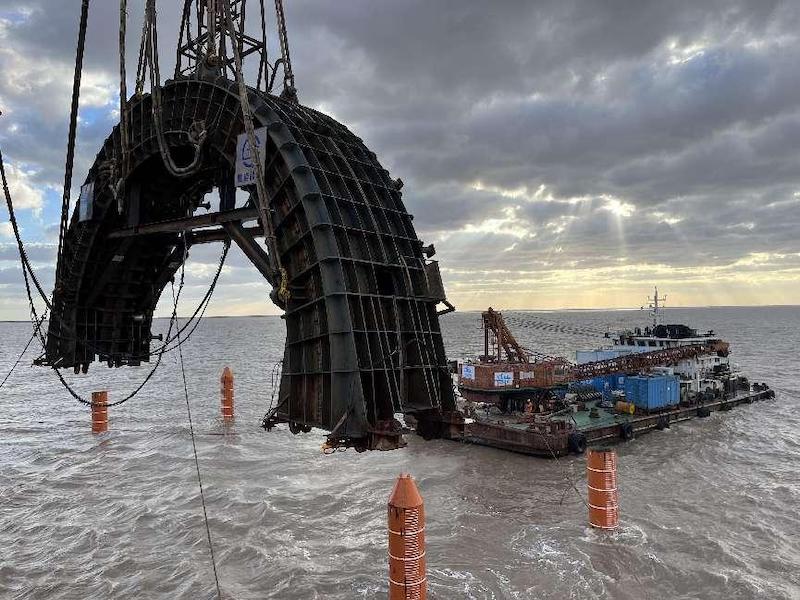
Arc beam piercing beam site
Exploring a new Chinese plan for the protection of water cultural relics
In July of this year, the National Cultural Relics Work Conference put forward a new era of cultural relics work policy of "protection first, strengthening management, digging value, effective use, and making cultural relics alive". "Protection first" is the core of cultural relics and archaeological work. The essential. After the Yangtze River Estuary No. 2 ancient ship is transported to the No. 1 dock at the former site of the Shanghai Shipyard, the State Administration of Cultural Heritage will guide Shanghai to coordinate the resources and forces of all parties, use multidisciplinary and multi-methods to promote the archaeological excavation of ancient ships, and explore the formation of China's overall protection of cultural relics. new plan.

Ancient ship mock-up
The overall protection of water cultural relics, especially marine wooden cultural relics, is a worldwide problem. In order to ensure the safety of ancient ship hulls and ship-borne cultural relics, the Shanghai Municipal Administration of Cultural Heritage, under the guidance of the State Administration of Cultural Heritage, integrated the Archaeological Research Center of the State Administration of Cultural Heritage, the Shanghai Museum, and the Shanghai The Cultural Relics Protection Research Center and other units have researched and formulated a phased protection work plan for ancient ships. After the ancient ship came out of the water on November 21, the on-site protection work started immediately. Cultural relic protection professionals bound and fixed the mast and mast clips on site, and carried out moisturizing treatment and overall covering protection on the exposed hull. At the same time, the seawater and silt in the area where the cultural relics are located were sampled and analyzed to obtain original information on the preservation environment of ancient ship cultural relics in a timely manner.
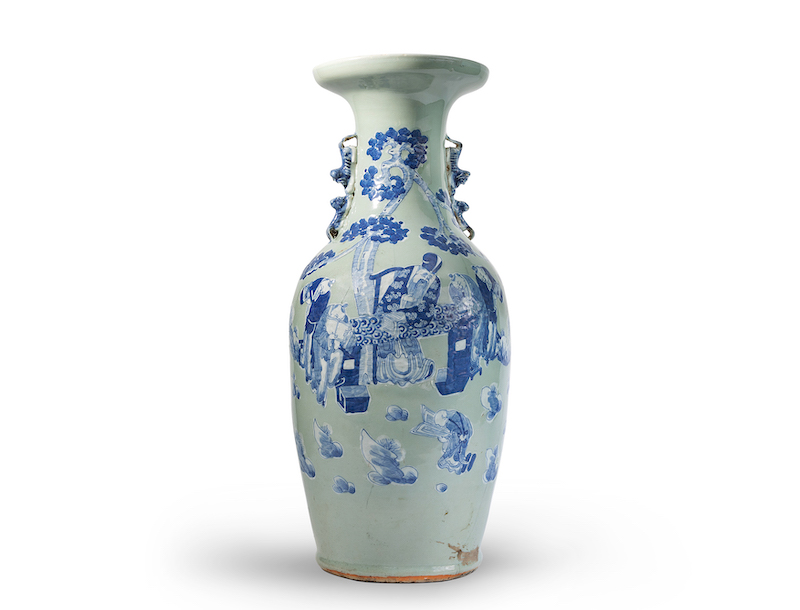
Qing Tongzhi Jingdezhen Kiln Bean Green Ground Heap White Blue and White Panasonic Gao Shitu Amphora

Qing Tongzhi Jingdezhen Kiln Bean Green Glaze Bowl
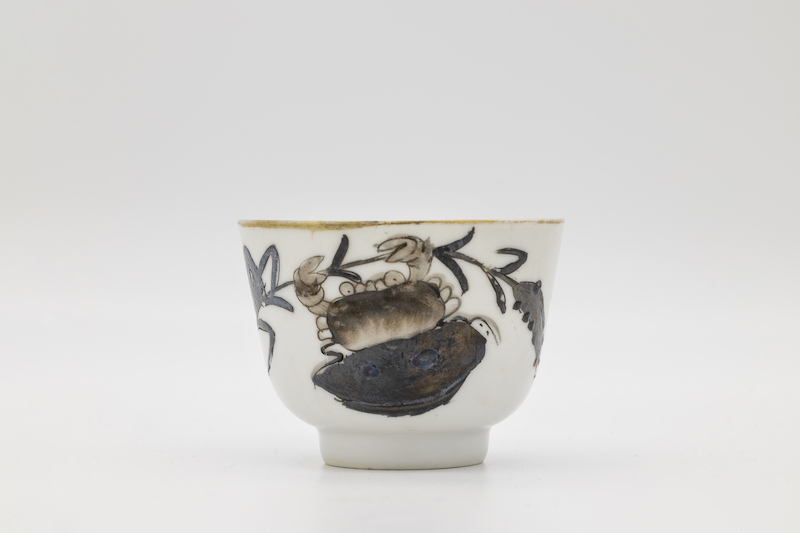
Qing Dynasty Tongzhi Jingdezhen Kiln Pastel Erjia Biography Cup
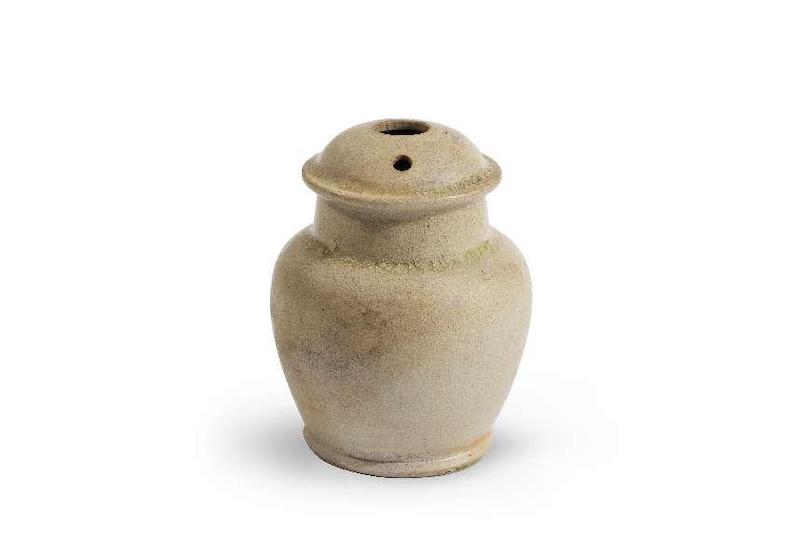
19th Century Kiln Mouth Celadon Glazed Hookah Jar in Vietnam
After the ancient ship enters the dock and takes its seat, fences will be added to the No. 1 dock site area, a regional security system will be established, and the safety protection level will be improved. At the same time, the cultural relics protection team will further collect various samples for testing and analysis, and carry out temporary reinforcement and protection of discretely exposed hull components and hull moisturizing treatment in a timely manner. During the construction of the ancient ship museum, a temporary archaeological station covering the entire caisson of the ancient ship will be built in the No. 1 dock area, a steel structure scaffolding protection cabin will be built, equipped with lighting, security and cultural relic protection systems, and real-time monitoring of the environmental conditions of the protection cabin will be carried out. Monitoring and control to ensure the stability of various environmental parameters in the cabin and the safety of the hull and cultural relics. It is estimated that before October 2023, the construction of the temporary archaeological station will be completed, and the ancient ship will enter the stage of laboratory archaeological excavation and overall protection of cultural relics.

Archaeological Protection Cabin Rendering

Archaeological Protection Cabin Rendering

Archaeological Protection Cabin Rendering
Create a new cultural landmark of the people's city
The Yangtze Estuary No. 2 ancient ship is well-preserved and rich in cultural relics. It is a very precious "time-space capsule". The archeology and protection of the Yangtze Estuary No. 2 ancient ship not only needs to fully obtain the historical information carried by the ancient ship, but also pays attention to the transformation of archaeological achievements and the dissemination of connotative value. Under the exhibition of cultural relics, we will talk about the past and present of ancient ships, talk about the innovation and breakthrough of the overall salvage and protection of ancient ships and the significance of the times, so that more people can understand the development process of China's underwater archeology, inherit and carry forward marine culture, and strengthen the public's awareness Awareness of cultural relics protection and marine awareness.
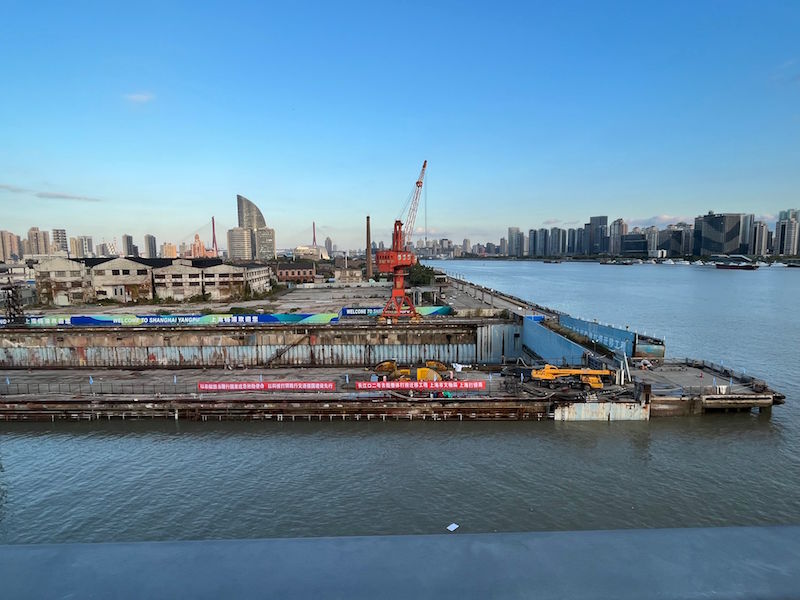
On November 23, the former site of the Shanghai Shipyard
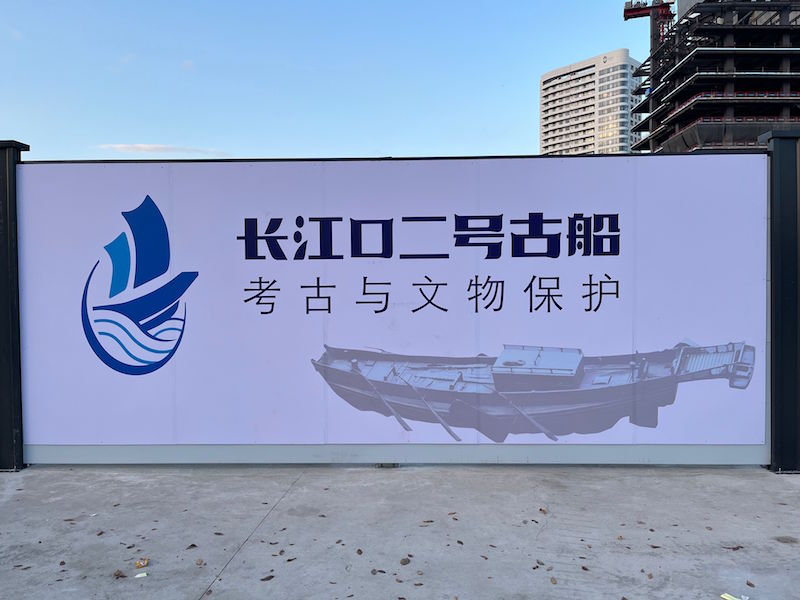
Posters related to the Yangtze River Estuary No. 2 ancient ship have been posted on the wall outside the dock
The "Fourteenth Five-Year Plan for National Economic and Social Development of Shanghai and Outline of Long-term Goals for 2035" released in January 2021 listed the No. Public cultural and sports facilities construction projects. The Shanghai Municipal Party Committee and the Municipal Government have decided to use two old docks and preserved historical buildings to build the Yangtze River Estuary No. It was once an important birthplace of China's modern industrial civilization, witnessed the development of the "industrial rust belt" into a "life show belt", and was the place where the important concept of "people's city" was first launched.
In the future, Shanghai will benchmark against the highest international standards and best levels, insist on leaving the best resources to the people, serve the people with high-quality supplies, and focus on the ancient ship museum with world influence, the world's first-class underwater archeology research center, the international The planning and construction goals of the display window of the Shipping Trade Center and the cultural landmark of the People's City "Life Belt" are to create a living archaeological site museum that can simultaneously carry out archaeological excavation, cultural relic protection, scientific research, and display education. The Old Dock has transformed itself into the brightest "Pearl" on the "Life Show Belt", allowing more people to appreciate the charm of cultural relics and archaeology, understand the deep nourishment of Chinese civilization, and feel the people's city warm expression.

